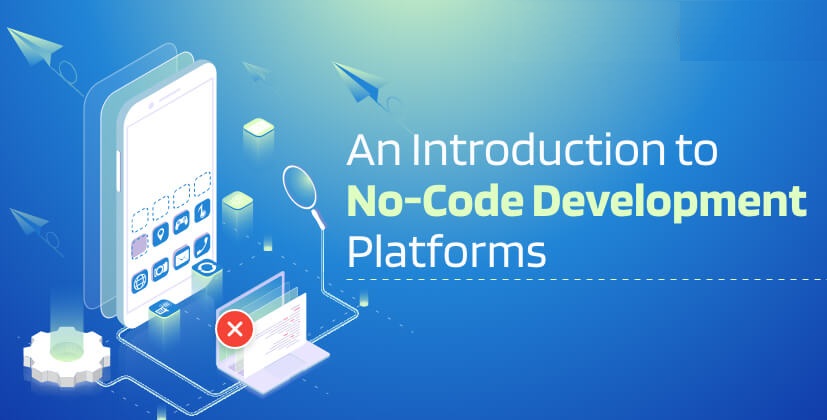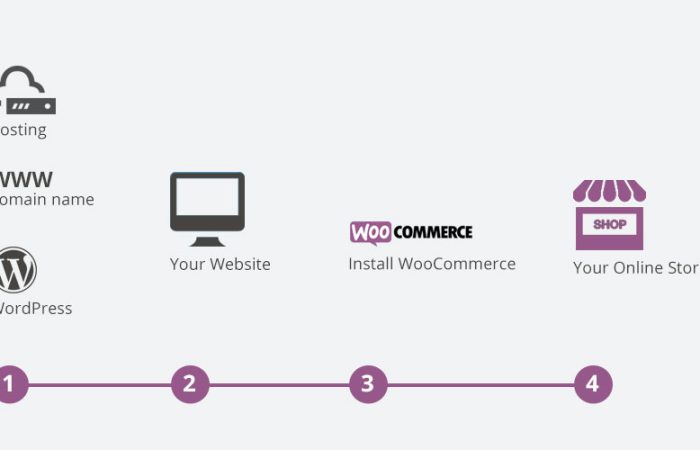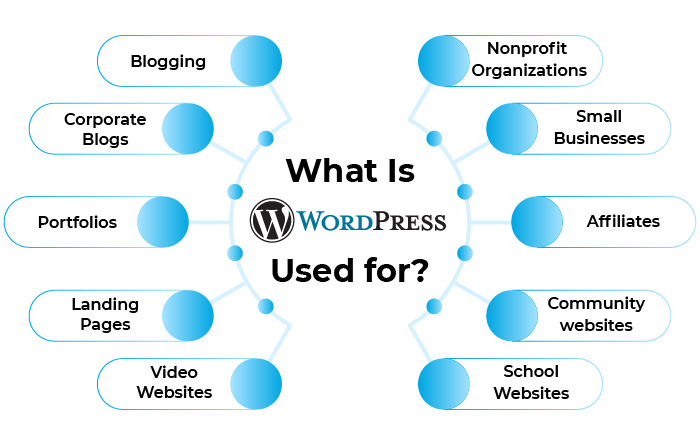If you've ever thought about selling products online, you've likely come across the term WooCommerce…
Introduction to No-Code Development Platforms
The digital revolution has transformed how businesses operate, pushing the demand for rapid application development to new heights. However, traditional software development often requires extensive coding knowledge and technical expertise, creating a barrier for non-developers. Enter no-code development platforms – a groundbreaking solution that empowers anyone, regardless of their technical background, to create sophisticated applications. In this blog post, we will explore the “Introduction to No-Code Development Platforms,” examining their features, benefits, and potential impact on the future of software development.
What Are No-Code Development Platforms?
No-code development platforms are tools that enable users to build applications through visual interfaces without writing any code. These platforms use drag-and-drop functionalities, pre-built templates, and a variety of other user-friendly features to simplify the development process. They democratize app development by allowing business professionals, marketers, and entrepreneurs to bring their ideas to life without relying on traditional coding skills.
Key Features of No-Code Development Platforms
- Visual Interface: The core feature of no-code platforms is their intuitive visual interface, which allows users to design applications by dragging and dropping components.
- Pre-built Templates: Many platforms offer a library of pre-built templates that users can customize to suit their specific needs.
- Integrations: No-code platforms often integrate with other software and services, enabling seamless data exchange and enhancing the functionality of the applications.
- Workflow Automation: Users can automate complex workflows with ease, improving efficiency and productivity.
- Responsive Design: These platforms ensure that applications are responsive and function well on various devices, including desktops, tablets, and smartphones.
The Rise of No-Code Development Platforms
The rise of no-code development platforms can be attributed to several factors. The increasing need for digital transformation, the shortage of skilled developers, and the desire for faster time-to-market are significant drivers behind their growing popularity.
Democratizing Application Development
No-code development platforms democratize the process of application development by lowering the entry barriers. Previously, creating a business application required knowledge of programming languages and software development frameworks. Now, with no-code platforms, individuals with little to no coding experience can build robust applications. This democratization opens up opportunities for innovation and problem-solving across various industries.
Accelerating Time-to-Market
In today’s fast-paced business environment, speed is crucial. No-code development platforms enable rapid prototyping and deployment, significantly reducing the time it takes to bring an application to market. Businesses can respond to market demands more quickly, gaining a competitive edge.
Cost-Effective Development
Traditional software development can be costly, involving expenses for hiring developers, purchasing software licenses, and maintaining infrastructure. No-code platforms offer a cost-effective alternative, allowing businesses to develop applications without significant upfront investments. This cost-efficiency is particularly beneficial for startups and small businesses with limited budgets.
Popular No-Code Development Platforms
Several no-code development platforms have gained popularity for their ease of use, versatility, and robust features. Here are some of the most widely used platforms:
1. Bubble
Bubble is a powerful no-code platform that allows users to build web applications without writing code. It offers a visual editor for designing user interfaces and workflows, making it easy to create interactive and dynamic applications.
2. Adalo
Adalo focuses on mobile app development, enabling users to build native mobile applications for iOS and Android. With its intuitive drag-and-drop interface, Adalo simplifies the process of creating and deploying mobile apps.
3. Airtable
Airtable is a versatile platform that combines the functionality of spreadsheets and databases. Users can create custom applications to manage projects, track inventory, and organize data, all without writing a single line of code.
4. Webflow
Webflow is a no-code platform designed for web design and development. It allows users to create responsive websites with a visual interface, providing full control over the design and layout.
5. Appgyver
Appgyver is a comprehensive no-code platform that supports both web and mobile app development. It offers a wide range of components and integrations, making it suitable for complex application development.
Benefits of No-Code Development Platforms
No-code development platforms offer numerous benefits that make them an attractive option for businesses and individuals alike.
1. Empowerment
No-code platforms empower non-technical users to take charge of the development process. Business professionals can turn their ideas into reality without depending on developers, fostering innovation and creativity.
2. Flexibility
These platforms provide flexibility in design and functionality. Users can customize applications to meet their specific needs, making adjustments and improvements as required.
3. Collaboration
No-code platforms enhance collaboration between technical and non-technical team members. Everyone can contribute to the development process, leading to more diverse and innovative solutions.
4. Scalability
Many no-code platforms are built to scale. As your business grows, you can expand and enhance your applications without significant redevelopment efforts.
5. Reduced Risk
By enabling rapid prototyping and iteration, no-code platforms reduce the risk associated with application development. Businesses can test ideas and gather feedback quickly, making data-driven decisions.
Challenges and Limitations
While no-code development platforms offer many advantages, they are not without challenges and limitations.
1. Complexity Limitations
No-code platforms are ideal for creating simple to moderately complex applications. However, highly complex applications with specific requirements may still require traditional coding.
2. Customization Constraints
Although no-code platforms provide a high degree of customization, there may be limitations compared to custom-coded solutions. Some unique or advanced features might not be achievable without coding.
3. Performance
Performance can be a concern with no-code applications, especially for resource-intensive tasks. Ensuring that the application runs smoothly and efficiently may require optimization.
4. Security
While many no-code platforms prioritize security, relying on third-party platforms for critical business applications can introduce security risks. It is essential to choose a platform with robust security measures and compliance with industry standards.
5. Vendor Lock-In
Relying on a specific no-code platform can lead to vendor lock-in, where migrating to another platform or custom solution becomes challenging. Businesses should consider this risk and plan accordingly.
Use Cases for No-Code Development Platforms
No-code development platforms are versatile and can be used in various industries and scenarios. Here are some common use cases:
1. Small Business Applications
Small businesses can use no-code platforms to develop custom applications for managing inventory, tracking sales, handling customer relationships, and more. These applications can streamline operations and improve efficiency.
2. Prototyping and MVPs
Startups and entrepreneurs can use no-code platforms to quickly develop prototypes and minimum viable products (MVPs). This allows them to validate ideas and gather user feedback without significant investments.
3. Internal Tools
Large organizations can leverage no-code platforms to create internal tools and workflows. For example, HR departments can build onboarding systems, and marketing teams can develop campaign management tools.
4. E-commerce
E-commerce businesses can use no-code platforms to create online stores, manage product catalogs, and handle order processing. Integrations with payment gateways and shipping providers make it easy to set up a complete e-commerce solution.
5. Educational Platforms
Educational institutions can develop learning management systems (LMS), student portals, and other educational tools using no-code platforms. These applications can enhance the learning experience and improve administrative efficiency.
The Future of No-Code Development
The future of no-code development looks promising as more businesses and individuals recognize its potential. Here are some trends and developments to watch for:
1. Increased Adoption
As awareness grows and more platforms enter the market, the adoption of no-code development will continue to rise. Businesses of all sizes will increasingly turn to no-code solutions for their development needs.
2. AI Integration
The integration of artificial intelligence (AI) with no-code platforms will further simplify the development process. AI can assist with tasks such as generating code, optimizing workflows, and enhancing user experience.
3. Advanced Customization
Future no-code platforms will offer more advanced customization options, bridging the gap between no-code and traditional development. This will enable the creation of more complex and feature-rich applications.
4. Community and Collaboration
The no-code community will continue to grow, fostering collaboration and knowledge sharing. Online forums, tutorials, and user groups will provide valuable resources and support for no-code developers.
5. Enterprise Solutions
No-code platforms will evolve to meet the needs of large enterprises, offering enhanced security, scalability, and compliance features. This will make no-code development a viable option for mission-critical applications.
Conclusion
The “Introduction to No-Code Development Platforms” highlights a transformative shift in the way applications are developed. By lowering the barriers to entry, these platforms empower individuals and businesses to innovate and bring their ideas to life quickly and cost-effectively. As no-code development continues to evolve, it will play a crucial role in shaping the future of software development, making technology more accessible and enabling a new wave of digital transformation.
Whether you are a small business owner, an entrepreneur, or a professional looking to create custom applications, no-code development platforms offer a powerful and flexible solution. Embrace this revolution, explore the possibilities, and harness the potential of no-code development to drive your success in the digital age.
Thank you for joining us in this “Introduction to No-Code Development Platforms.” We hope this guide provides valuable insights and inspires you to explore the world of no-code development.




